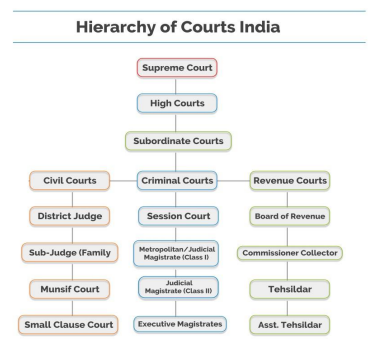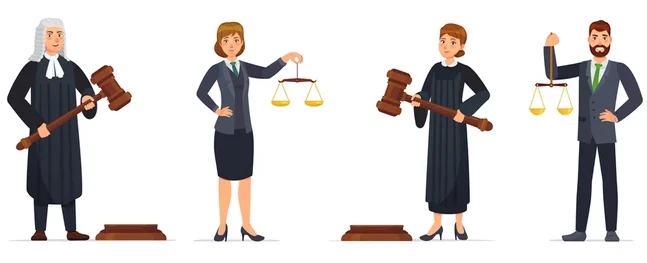In the realm of legal systems, litigation serves as the primary mechanism for resolving disputes through the court system. In India, the courtroom and trial system forms the backbone of the litigation process, providing parties with a forum to present their cases, present evidence, and seek redress for their grievances. In this comprehensive article, we will explore the intricacies of India’s litigation laws, shedding light on the courtroom dynamics, trial procedures, and key legal principles that govern the litigation process.
The Structure of India’s Court System

India’s court system is hierarchical, with multiple tiers of courts operating at the national, state, and district levels. The Supreme Court of India serves as the apex court, with jurisdiction over constitutional matters, disputes between states, and appeals from lower courts. Below the Supreme Court are the High Courts, which exercise jurisdiction over their respective states or union territories.
Each state is further divided into districts, with district courts serving as the primary trial courts for civil and criminal cases.
Key Players in the Courtroom
- Judges: Judges preside over court proceedings, interpret and apply the law, and render decisions based on the evidence presented and legal arguments made by the parties. In India, judges are appointed by the President of India or the Governor of the state, depending on the level of the court.
- Lawyers: Lawyers represent the parties involved in a legal dispute, advocating on their behalf, presenting evidence, and making legal arguments before the court. In India, lawyers are licensed by the Bar Council of India and are subject to professional codes of conduct and ethics.
- Parties: Parties are the individuals or entities involved in a legal dispute, such as plaintiffs (those initiating the lawsuit) and defendants (those being sued). Parties have the right to present their case, call witnesses, and cross-examine opposing witnesses during trial proceedings.
- Witnesses: Witnesses provide testimony under oath regarding facts relevant to the case. Witnesses may be called by either party to testify to the truth of certain statements or events. In India, witnesses are subject to examination-in-chief, cross-examination, and re-examination by the parties’ respective lawyers.
Trial Procedures in India
The trial process in India follows a set of procedural rules and guidelines outlined in the Code of Civil Procedure (CPC) for civil cases and the Code of Criminal Procedure (CrPC) for criminal cases. The trial typically proceeds as follows:
- Filing of Pleadings: The litigation process begins with the filing of pleadings by the parties, including the plaint (in civil cases) or the charge sheet (in criminal cases), outlining the facts and legal claims or defences.
- Framing of Issues: The court identifies the disputed issues between the parties and frames them into specific legal questions to be resolved during the trial.
- Examination of Witnesses: Witnesses are called to testify before the court, providing evidence relevant to the case. Witnesses are subject to examination-in-chief by the party calling them, cross-examination by the opposing party, and re-examination by the party who called them.
- Presentation of Evidence: Parties present documentary evidence, such as contracts, agreements, or medical reports, to support their claims or defences. The court evaluates the admissibility and relevance of the evidence presented.
- Arguments of Counsel: Lawyers for each party present legal arguments and interpretations of the law to support their case. They may cite legal precedents, statutes, or legal principles to bolster their arguments.
- Final Arguments: After the presentation of evidence and legal arguments, each party has an opportunity to make final submissions summarizing their case and addressing any remaining issues.
- Judgment: The court deliberates on the evidence and legal arguments presented and renders a judgment based on its findings. The judgment may include findings of fact, conclusions of law, and orders for relief or remedies.
Key Legal Principles in Indian Litigation
- Adversarial System: India follows an adversarial system of justice, where parties to a dispute present their cases before an impartial judge who acts as a neutral arbiter. The judge’s role is to weigh the evidence, apply the law, and render a decision based on the merits of the case.
- Presumption of Innocence: In criminal cases, the accused is presumed innocent until proven guilty beyond a reasonable doubt. The burden of proof rests on the prosecution to establish the accused’s guilt through admissible evidence.
- Right to a Fair Trial: The Indian Constitution guarantees the right to a fair trial, including the right to legal representation, the right to a speedy trial, and the right to be heard before an impartial tribunal. Any violation of these rights may constitute grounds for appeal or judicial review.
- The doctrine of Res Judicata: Under the doctrine of res judicata, a matter that has been adjudicated by a competent court and has attained finality cannot be re-litigated between the same parties. This principle promotes judicial efficiency and finality of judgments.
- Rule of Law: The rule of law is a fundamental principle of Indian jurisprudence, ensuring that laws are applied uniformly and consistently and that individuals are subject to the authority of the law rather than arbitrary government action.
Challenges and Reform Initiatives
Despite the robust legal framework governing litigation in India, the courtroom and trial system faces several challenges, including delays in case disposal, backlog of pending cases, and procedural inefficiencies. To address these challenges, various reform initiatives have been undertaken, such as the introduction of alternative dispute resolution mechanisms, the digitization of court records and processes, and the establishment of specialized courts to handle specific types of cases.

Conclusion
India’s courtroom and trial system serves as the cornerstone of its legal framework, providing parties with a forum to resolve disputes and seek justice under the rule of law. By understanding the procedural rules, key legal principles, and challenges facing the litigation process, stakeholders can work towards ensuring the effective administration of justice and the protection of individuals’ rights within the Indian legal system. As India continues to evolve and modernize its legal infrastructure, the courtroom and trial system will play a pivotal role in upholding the principles of fairness, equality, and the rule of law.
Adv. Khanak Sharma


Their staff is always eager to help and assist.
how do i get lisinopril
They have strong partnerships with pharmacies around the world.
Their compounding services are impeccable.
can i buy cheap cytotec no prescription
Offering a global gateway to superior medications.
在電子霧化產品市場中,LANA煙彈與RELX系列煙彈一直是備受矚目的熱門選擇。
relx รุ่น 6 เป็นรุ่นที่มีการพัฒนาอย่างชัดเจนจากรุ่นก่อนหน้า,relx บุหรี่อิเล็กทรอนิกส์